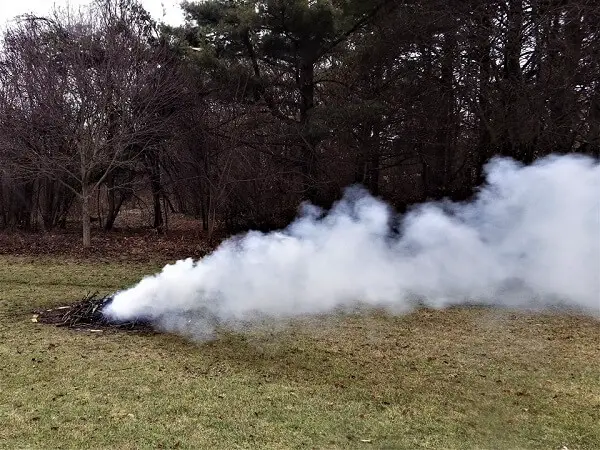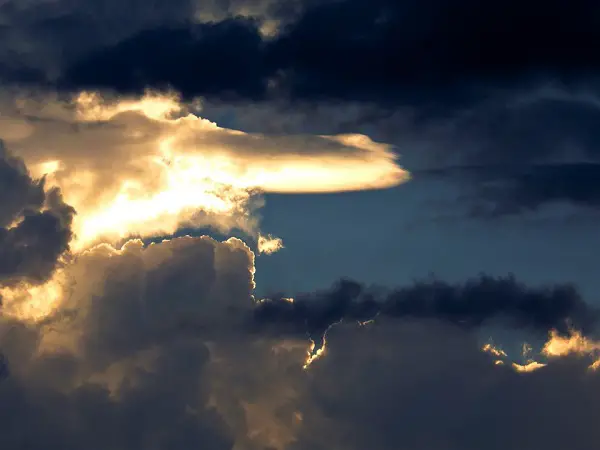Estimated reading time: 15 minutes
Native Peoples Knew How to Read the Signs in the Sky, and You Should Too.
Long before the weather channel, our pioneer ancestors and native tribes looked for signs in nature to forecast the weather. The sky was their primary focus, but how the sky, air, and barometric pressure affected plants, animals, and people were also tell-tale signs.
Over time, simple sayings evolved to remind us of the weather to come, although some of them aren’t so accurate from a scientific standpoint.
Want to save this post for later? Click Here to Pin It on Pinterest!
Weather Sayings from Folklore:
- Red sky at night, sailor’s delight; Red sky at morning, sailors take warning.
- When ditch and pond offend the nose, look for rain and stormy blows.
- Chimney smoke descends, our nice weather ends.
- A ring around the sun or moon, means rain or snow coming soon.
- When clouds appear like rocks and towers, the Earth’s refreshed by frequent showers.
- Rainbows in the morning give you fair warning.
It’s one thing to remember some old adages, but it’s easier to remember if you understand the science behind the sayings.
Reading the Smoke
Smoke from a fire can give us some very direct clues about atmospheric pressure and the potential for good or bad weather.
Smoke Rising

Rising smoke indicates a high-pressure area in the vicinity. High pressure is associated with fair weather and clear skies.
Smoke Collapsing

When smoke collapses and curls, it’s indicative of a low-pressure system in the area. Indoors, the unexpected presence of wood smoke is another sign. Low pressure is associated with stormy weather.
Reading the Sky
Red Sky at Night…

…is NOT a sailor’s delight! This old adage is scientifically incorrect. The rotation of the Earth causes prevailing winds to come from the West. The sun sets in the West and a red sky indicates a significant cloud bank. Heavy clouds coming from the West with the prevailing winds is not a promise of delightful weather but the opposite.
Red Sky in Morning…

…is when sailors needn’t take warning. Here again, the sun rises in the East and a red sky is due to cloud coverage. Those big clouds are receding from your location as the westerly prevailing winds carry them away from you.
Sun Halos

Moon Halos

A ring around the sun or moon is referred to as a “Sun or Moon Halo.” Haloes are caused by high altitude ice-crystals in Cirrus clouds. Because Cirrus clouds are a signal for impending rain, a ring around the moon usually means a warm front is coming, bringing rain with it. The same is true of sun haloes.
Reading Rainbows

A rainbow in the western sky in the morning indicates rain. Here again, prevailing westerly winds will bring that moisture towards your location. The opposite is true for a rainbow in the East. The prevailing winds will move the moisture and rain away from you.
Reading the Moon

A clear moon in a clear sky indicates no imminent moisture but could be a harbinger of cooler temperatures overnight and into the morning.

Scattered clouds across the Moon are a sign of moisture-laden clouds and often are a portent of rain.
Reading the Air

The air can tell us a lot about the weather. We can feel it, see it when it’s humid or foggy, hear it in the trees, and even smell it. Before stormy weather sets in, a low-pressure system pushes out an area’s typical wind patterns. This results in the calm before the storm.
Humidity

Signs of high humidity include frizzy hair, curling leaves, and swollen wood. You’ll also notice general dampness. Clothes on a line never seem to get dry. A woodfire never seems to light quite fast enough. Pinecones stay closed when the air is humid. High humidity is a sign of moisture in the air indicating coming rain.
Smells

A low-pressure system will cause molecules from decomposing plant matter in a swamp, bog, or pond to fill the air with a composting smell.
Reading the Flowers

Humidity strengthens smells in the air and fragrant flowers will be very noticeable as a result.
Wind

Wind is the result of high and low-pressure shifts in an area. As a rule, westerly winds indicate good weather if no clouds are apparent and easterly winds are an indication of bad weather. If you’ve ever heard of a Nor’Easter, it’s due to this east wind condition.
Reading Temperature
The Cricket Trick
A cricket’s metabolism changes in lockstep with temperature changes. Count the number of times a cricket chirps in 14 seconds and add 40 to that number. The resulting number approximates the temperature in Fahrenheit.
Reading the Clouds

There are a variety of weather factors apparent from clouds including shape, color, altitude, movement, and cloud type.
Reading Cloud Shape

Clouds that are high, white, and wispy indicate good weather while clouds that are low, thick, and dark mean stormy weather. Flat clouds mean the air is stable while fluffy clouds mean the air is unstable.
Reading Cloud Color

Clouds come in four flavors: white, gray, black, and brown. Each means something different.
- Black clouds indicate a coming storm that does not have strong winds.
- Brown clouds indicate a coming storm that has strong winds.
- White clouds mean good weather, though a storm could be imminent.
- Gray clouds indicate a new or a light storm. Gray skies can also mean that the storm is affecting a large area and may remain.
Reading Altitude

High clouds usually mean that they are farther away but could become a weather threat up to 36 hours later. Lower clouds mean that bad weather is coming.
Movement

Gathering low clouds are a sign of bad weather. Rising and spreading clouds indicate the weather is clearing.
Reading Cloud Types
Cirrocumulus

Small rounded masses looking like rippled sand. These indicate that cold weather is coming. Higher cirrocumulus clouds indicate fair weather. They often follow a storm and dissipate, leaving a blue sky.
Altocumulus

These are sometimes referred to as Mackerel Scales. They are similar to cirrocumulus but thicker; not so white with tinges of grey due to their size and shadows cast. They typically mean bad weather within 36 hours. They also appear after a storm.
Cumulonimbus

Low storm clouds that look dark and ominous. They can grow to 20,000 feet to form thunderheads with an anvil top. They usually bring rain, hail, strong winds, and lightning.
Cumulus

Large, fluffy white clouds interspersed across the sky. They usually indicate fair weather and sometimes create what is called a postcard sky.
Cirrus clouds

High, wispy white clouds formed from ice crystals. They are also called Mare’s tails and appear in fine weather.

Sometimes these clouds show colors of the rainbow. These types of clouds are called “Sun Dogs.” They can sometimes indicate bad weather within 36 hours.
Cirrostratus

These look like white veins and are made up of ice crystals. They are the only clouds to create a halo around the sun or moon. If big, the halo indicates fair weather. When small, the halo indicates rain. When covering the sky and the sky above darkens, rain is incoming.
Altostratus

These appear as a grayish veil leaving the sun or moon appearing as a watery disk. As rain approaches, the disk disappears, the skies grow dark, and it rains.
Nimbostratus

A low, dark repeating pattern of clouds. They are ominous looking and mean rain or snow in 4 to 5 hours that will sustain for hours afterward.
Stratocumulus (Mammatus)

A low, lumpy, rolling mass that often covers the sky, but thin enough for the sun to be seen in the background. They indicate the potential for light showers but typically dissipate in the afternoon to clear skies. If they linger, there is the potential for severe weather, including hail and tornadoes.
Stratus

Lowest clouds forming a layer with the appearance of fog. They are sometimes referred to as hill fog because of their low altitude. They produce drizzle on occasion. When seen at night, they usually indicate the onset of fair weather.
Reading the Animals
Animals are very much in tune with nature and their instincts and response to conditions are a good indicator of weather to come.
Birds

Birds can sense air pressure patterns.
- If you see birds eating during a storm, then it will likely last.
- If you see flocks of birds migrating in the sky, the weather will likely be good.
- When a storm is approaching, it’s believed that birds fly lower in the sky.
Frogs

The louder the frogs sing, the stronger the rain.
Turtles

Turtles head to higher ground before a storm. You may also see them on the road a day or two before a rain.
Snakes

If you see a snake in an unexpected place or time when the snake would typically be in its nest, bad weather is coming.
Butterflies and Bees

If you don’t see bees and butterflies when and where you would expect to see them, there could be a storm coming.
Ants

Ants build up their mounds and create steep sides if there’s a storm coming.
Keep Reading the Skies

Why trust the weatherman when you can read the weather like a book?
Like this post? Don't Forget to Pin It on Pinterest!
You May Also Like:














This entire Website is, I am sure the best I have ever read or subscribed to….
We really need to learn these old ways. If we ever lost the internet or other communication, these skills would be essential.